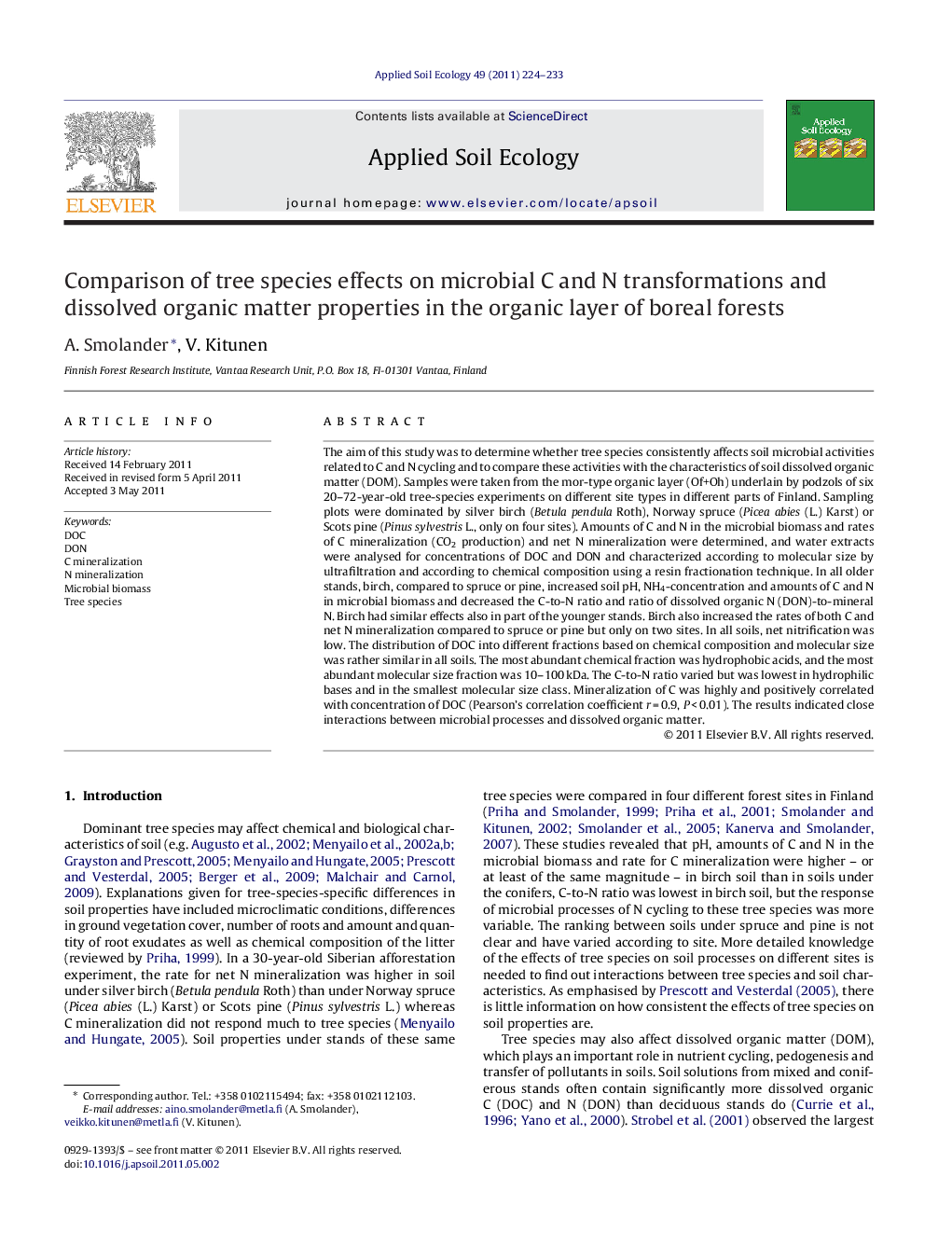| کد مقاله | کد نشریه | سال انتشار | مقاله انگلیسی | نسخه تمام متن |
|---|---|---|---|---|
| 4382716 | 1617834 | 2011 | 10 صفحه PDF | دانلود رایگان |

The aim of this study was to determine whether tree species consistently affects soil microbial activities related to C and N cycling and to compare these activities with the characteristics of soil dissolved organic matter (DOM). Samples were taken from the mor-type organic layer (Of+Oh) underlain by podzols of six 20–72-year-old tree-species experiments on different site types in different parts of Finland. Sampling plots were dominated by silver birch (Betula pendula Roth), Norway spruce (Picea abies (L.) Karst) or Scots pine (Pinus sylvestris L., only on four sites). Amounts of C and N in the microbial biomass and rates of C mineralization (CO2 production) and net N mineralization were determined, and water extracts were analysed for concentrations of DOC and DON and characterized according to molecular size by ultrafiltration and according to chemical composition using a resin fractionation technique. In all older stands, birch, compared to spruce or pine, increased soil pH, NH4-concentration and amounts of C and N in microbial biomass and decreased the C-to-N ratio and ratio of dissolved organic N (DON)-to-mineral N. Birch had similar effects also in part of the younger stands. Birch also increased the rates of both C and net N mineralization compared to spruce or pine but only on two sites. In all soils, net nitrification was low. The distribution of DOC into different fractions based on chemical composition and molecular size was rather similar in all soils. The most abundant chemical fraction was hydrophobic acids, and the most abundant molecular size fraction was 10–100 kDa. The C-to-N ratio varied but was lowest in hydrophilic bases and in the smallest molecular size class. Mineralization of C was highly and positively correlated with concentration of DOC (Pearson's correlation coefficient r = 0.9, P < 0.01). The results indicated close interactions between microbial processes and dissolved organic matter.
► Impact of tree species on soil properties cannot be generalized across sites.
► Birch, compared to conifers, often decreased soil C-to-N and DON-to-mineral N ratios.
► Birch often increased soil pH, NH4-N concentration and microbial biomass.
► Adsorption and molecular size properties of DOM were rather similar in all soils.
► C mineralization was highly and positively correlated with concentration of DOC.
Journal: Applied Soil Ecology - Volume 49, September 2011, Pages 224–233